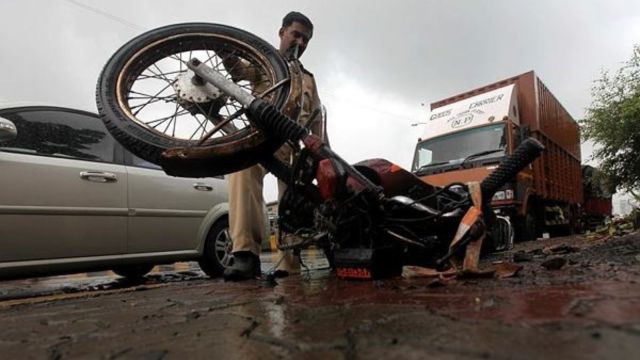Click here to join Express Pune WhatsApp channel and get a curated list of our stories
As nerve damage spikes due to two-wheeler accidents, doctors stress on use of helmets and protective gear
According to hand surgeons, at least 70 per cent of brachial plexus injuries in Pune stem from road accidents, with the majority involving two-wheelers.
 In Pune, at least 70% brachial-plexus injuries stem from road accidents, with the majority (90%) involving two-wheelers, hand surgeons have said. (Express File/Representational Photo)
In Pune, at least 70% brachial-plexus injuries stem from road accidents, with the majority (90%) involving two-wheelers, hand surgeons have said. (Express File/Representational Photo)“I was unable to move my right shoulder and elbow. While surgery has repaired the nerve damage, regaining full hand movement remains a daunting challenge, requiring months of physiotherapy.”
These were the words of a 31-year-old Pune man who suffered severe nerve damage known as brachial plexus injury following a motorbike accident during the monsoon in July last year.
His case is far from unique. Traumatic brachial plexus injuries are serious, life-changing injuries that are becoming more common worldwide. Experts in trauma injuries have raised alarms over the increasing incidence caused by road traffic accidents. In Pune, at least 70 per cent of brachial plexus injuries stem from road accidents, with the majority, around 90 per cent, involving two-wheelers, hand surgeons said.
The brachial plexus is composed of five main nerve roots that originate from the spinal cord in the neck. Each nerve supplies the shoulder, elbow, wrist, and hand with motor and sensory functions.
According to Dr Abhijeet Wahegaonkar, a senior hand surgeon at Sancheti Hospital, injuries to this network of nerves often occur when the arm is forcefully pulled or stretched, which frequently happens in road accidents, particularly those involving two-wheelers.
“Early detection and nerve repair are crucial for a full recovery. If you have experienced an injury to the neck or shoulder area and are unable to feel or move your hand or arm, it is important to contact your healthcare provider to determine the cause of your symptoms. A comprehensive physical examination, along with radiological and electrodiagnostic tests, will be included in the initial evaluation,” he said.
Hand surgeons are specially trained to repair nerve damage, a critical area of their work. Nerve injuries are most commonly seen in motor vehicle accidents. “Patients often arrive with paralysis affecting their hand and arm, extending from the shoulder down. Although brachial plexus injuries are frequent in such accidents, awareness about them is surprisingly low. As a result, patients often seek help from hand surgeons too late,” he said.
“About 90 per cent of road traffic accidents involve two-wheelers. Among them, about 54 per cent of patients have brachial plexus injury associated with other injuries. And 46 per cent of patients with motor vehicle accidents have isolated injury involving the brachial plexus,” Dr Wahegaonkar said.
Dr Wahegaonkar emphasised the importance of wearing helmets and protective gear to reduce injuries. He stated, “Wearing protective riding gear alongside a helmet—such as gloves, elbow pads, sleeves, or a jacket—is essential to protect against abrasions in the event of a road accident.”
According to data from Sancheti Hospital, a major referral centre for trauma injuries in Pune, most patients who suffer from brachial plexus injuries due to motorbike accidents are between the ages of 20 and 50.
“Every year, we receive approximately 100 to 120 cases of brachial plexus injuries resulting from road accidents at Sancheti Hospital. These cases primarily come from Pune and the surrounding districts. It is often observed that the right side is more affected than the left. About 50 per cent of these patients experience injuries to all five nerves. Additionally, more than 80 per cent of patients with these injuries are male,” said Dr Parag Sancheti, chairman and chief orthopaedic surgeon at Sancheti Hospital.
Click here to join Express Pune WhatsApp channel and get a curated list of our stories







